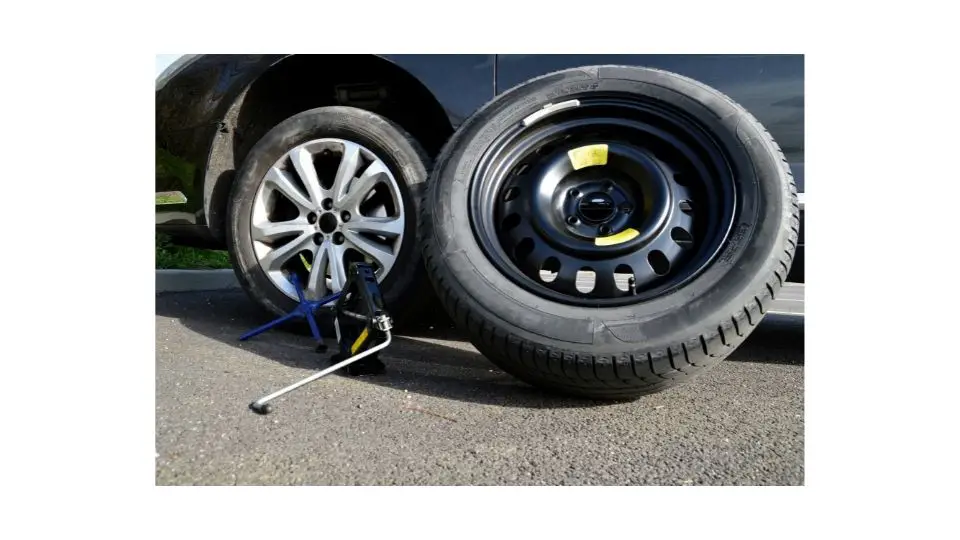The space-saver spare tire is an extra tire stored in the vehicle. It is thinner and smaller than the standard vehicle tire. Their purpose is to get you to a safe place in case of a puncture so that the normal tire can be fitted. They are commonly known as donuts.
Since these tires are not made, with regular dimensions, they tend to throw off the handling and it affects the transmission.
The manufacturers say the donut is only good for 50 miles at an average speed of 55 miles per hour. Experiential evidence tends to suggest that it can be viable for at least 100 miles; 200 miles could be a stretch.
When Should a Donut be Used?
In the case of a breakdown, the spare wheel is supposed to be placed in the rear to improve handling. Placing it in the front will result in a lot of understeers depending on the direction. In addition, with a spare, you should have the speed at under 50 miles per hour. There is an account of someone having suffered a tire puncture and made the journey from North Florida to West Virginia on a donut.
That is a distance of about 900 miles. This seems to support the idea that a donut can endure a mere 200 miles. Just as a reminder so you do not find yourself stranded in the middle of nowhere with no cell phone signal, always check your spare tires for pressure.
And while we are addressing the issue of tire pressure, it affects the braking distance of a vehicle as normal tires with full pressure have good traction and braking response.
When one of the tires has been replaced with a space-saver tire, half a car length is a safe braking distance.
Donut Tire Facts
The donut wheel is smaller than the other wheels and has very little to no tread and as stated before makes it dangerous when you are facing projectiles or hazards. As it is a smaller tire than the rest it will be completing more rotations than the other ones meaning it’ll wear out faster.
Driving too long on a donut, beyond the suggested 50 miles, can result in transmission issues. There can be other unseen mechanical damage that the vehicle undergoes that leads to very expensive repairs. As such it is best not to exceed the recommended 50 miles or a possible extension of 70 miles.
In one testimonial someone had placed the donut in the front of a front-wheel-drive vehicle for which the car system kept reading the wheel as slipping. As a donut spare tire is smaller and thinner in size when compared to the tires your car comes equipped with, the car will normally pull to the side the spare is on, which is evident when using the brake. It is extremely vital to be alert on controlling the steering when using a donut spare tire.
Crucial Things to Know when Using a Donut Tire
The donut is usually made from hard plastic-like materials as opposed to rubber. It is smaller in diameter and with than the regular tire.
The rim is made from a lightweight material making it easier to move and during the tire change and so that the car is not carrying a heavyweight consistently. Beyond emergency use, the donut messes with the vehicle’s differential, the part that sends power from the transmission to the wheel.
Due to the donut being a smaller wheel, the differential works harder and differently, to give power to the wheel. This spare is also hard on the car’s alignment, anti-lock brake system, and the other tires.
A donut tire will break down over time, so it is advisable that when you do your tire rotation you check the condition of your spare as well.
Alternatively, nowadays there is a puncture repair kit that can be useful in much the same way as the donut. It is also temporary and can result in the tyre being written off. Your flat kit should include pliers, a screwdriver and an air pump.
Conclusion on Driving 200 Miles on a Donut
In summary, a donut wheel should only be used for emergency purposes to get you to a place where you can get the vehicle fixed. It should not exceed speeds of over 50mph and distances of more than 70 to 90 miles. Though it is possible to exceed these recommendations it endangers both the driver and vehicle.

Robert Anderson is a world class motorhead who rebuilt his first carb at age 10, his first engine at age 15, and completed his first full hotrod build when he was just 18! Previously, he has ran a part warehouse, delivered pizzas, and managed the service department for a $20 million/year revenue dealership. Robert knows cars like few others and he is passionate about sharing his knowledge.

